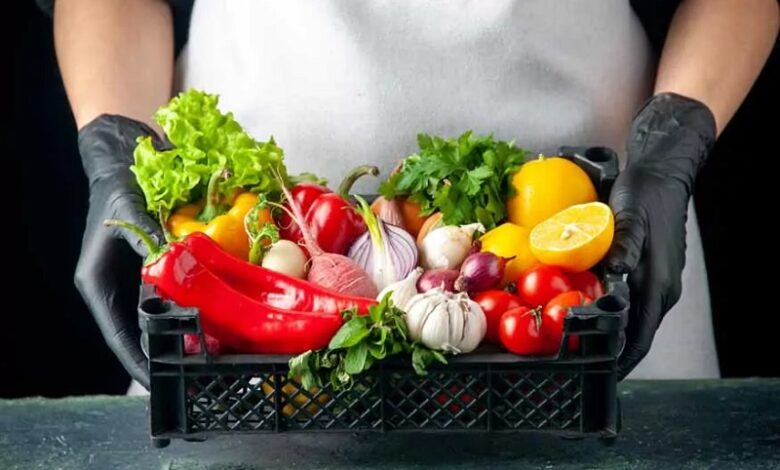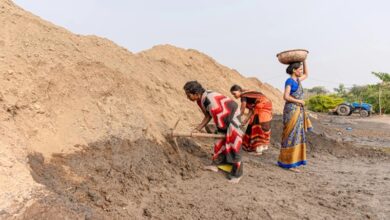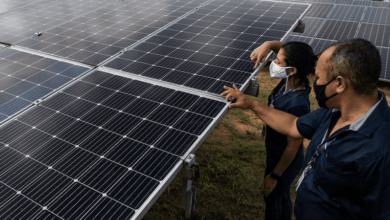What is Food Security and why is it so important?

Saikat Kumar Basu/3rd October 2024
Food Security refers to the condition in which all people, at all times, have physical, social, and economic access to sufficient, safe, and nutritious food that meets their dietary needs and food preferences for an active and healthy life. It encompasses several dimensions:
Availability: There must be an adequate supply of food on a consistent basis, whether through domestic production, imports, or aid.
Access: Individuals must have the economic means to obtain food, either through purchasing power or social safety nets.
Utilization: Food should be utilized effectively by the body, ensuring it provides the necessary nutrients for good health and well-being.
Stability: Food security requires that these conditions are maintained over time, without sudden disruptions.
Food security is crucial for several reasons:
Health: Access to nutritious food is essential for maintaining good health and preventing malnutrition and related diseases.
Economic Stability: Food security contributes to economic stability by ensuring that individuals are productive and able to contribute to the economy.
Social Stability: Adequate food supply reduces social unrest and conflicts that can arise from food shortages or unequal distribution.
Development: It is a cornerstone of sustainable development, allowing communities to thrive and individuals to reach their full potential.
Ensuring food security involves complex challenges, including agricultural productivity, distribution systems, poverty alleviation, and environmental sustainability. Governments, organizations, and individuals play critical roles in addressing these challenges to achieve food security globally.
How is Food Security related to Climate Change?
Food security is closely linked to climate change in several ways:
Crop Yields and Production: Climate change affects temperature, precipitation patterns, and extreme weather events, all of which can impact agricultural productivity. Changes in temperature and rainfall patterns can either benefit or harm crop growth, leading to potential shifts in where and how crops can be grown effectively.
Water Resources: Climate change alters water availability, which is crucial for agriculture. Changes in precipitation patterns and increased frequency of extreme weather events like droughts or floods can disrupt water supplies for irrigation and drinking water, affecting food production and access to water for farming.
Pests and Diseases: Changes in climate can influence the distribution and behavior of pests and diseases that affect crops and livestock. Warmer temperatures can expand the range of pests and pathogens, increasing the likelihood of crop damage and loss.
Livelihoods and Vulnerability: Many communities reliant on agriculture are particularly vulnerable to climate change impacts. Reduced crop yields or livestock losses can lead to decreased income and food availability, exacerbating food insecurity.
Nutritional Quality: Climate change can also impact the nutritional quality of food. Changes in growing conditions may alter the nutrient content of crops, potentially reducing their nutritional value.
Global Trade and Prices: Climate change can disrupt global food trade patterns due to shifts in production and availability. This can affect food prices and accessibility, particularly in regions that rely heavily on imported food.
Addressing food security in the context of climate change requires adaptive strategies such as developing climate-resilient crops, improving water management practices, enhancing disaster preparedness, promoting sustainable agricultural practices, and supporting policies that strengthen food systems and reduce vulnerability among communities most at risk.
How does Climate Change negatively impact global Food Security?
Climate change negatively impacts global food security in several ways:
Changing Weather Patterns: Climate change alters weather patterns, leading to more frequent and intense extreme weather events like droughts, floods, and storms. These events can destroy crops, reduce yields, and disrupt food production.
Shifts in Growing Seasons: Changes in temperature and precipitation patterns can shift growing seasons or make certain regions less suitable for agriculture, affecting crop productivity and availability.
Water Scarcity: Increased temperatures and altered precipitation patterns can lead to water scarcity, reducing water availability for irrigation, which is crucial for crop growth.
Impact on Livelihoods: Many rural communities depend on agriculture for their livelihoods. Climate change-induced crop failures and reduced agricultural productivity can threaten food access and exacerbate poverty.
Biodiversity Loss: Climate change contributes to biodiversity loss, affecting pollinators and natural pest control mechanisms crucial for agriculture, which can further reduce crop yields.
Food Distribution and Access: Climate change can disrupt transportation routes and infrastructure, making it harder to distribute food to areas in need and increasing food prices.
Nutritional Impact: Changes in temperature and CO2 levels can affect the nutritional quality of crops, reducing essential nutrients like zinc, iron, and protein in staple foods.
Addressing climate change and its impacts on food security requires comprehensive strategies including sustainable agriculture practices, resilience-building measures, and international cooperation to mitigate greenhouse gas emissions.
What are the steps needed to implement or practise to ensure global Food Security?
Ensuring global food security involves a multi-faceted approach that integrates policies, practices, and international cooperation. Here are key steps that can help:
Promote Sustainable Agriculture: Encourage farming practices that minimize environmental impact, preserve soil health, and promote biodiversity.
Invest in Research and Technology: Support research into improving agricultural productivity, developing drought-resistant crops, and enhancing storage and distribution systems.
Improve Infrastructure: Enhance transportation networks, storage facilities, and market access to reduce food losses and improve efficiency.
Address Climate Change: Mitigate and adapt to climate change impacts on agriculture through resilient farming practices and policies.
Ensure Access to Inputs: Make agricultural inputs like seeds, fertilizers, and irrigation systems accessible and affordable, especially for smallholder farmers.
Promote Fair Trade and Markets: Ensure fair prices for farmers and equitable access to markets, both locally and internationally.
Reduce Food Loss and Waste: Implement measures to reduce post-harvest losses and minimize food waste throughout the supply chain.
Y
Support Nutrition Programs: Enhance nutrition education and support programs that ensure vulnerable populations have access to diverse and nutritious foods.
Strengthen Policy and Governance: Develop and enforce policies that promote food security, regulate food markets, and protect agricultural land.
Foster International Cooperation: Collaborate with other countries and organizations to share knowledge, resources, and technology for sustainable agricultural development.
By implementing these steps collaboratively on a global scale, countries can work towards achieving food security for all, ensuring that everyone has access to safe, nutritious, and sufficient food at all times.
How developed and underdeveloped countries are being impacted due to Climate Change induced Food Security issues?
Climate change impacts food security in both developed and underdeveloped countries, albeit in different ways and with varying degrees of severity.
Developed Countries:
Agricultural Disruptions: Developed countries with advanced agricultural systems may face disruptions due to changing weather patterns, including more frequent and severe droughts, floods, or heat waves. This can affect crop yields and livestock production.
Economic Impacts: Food prices can become more volatile as production costs increase and supply chains are disrupted. This affects not only consumers but also industries reliant on stable agricultural outputs.
Technological and Economic Resilience: These countries often have more resources to invest in technological solutions like climate-resistant crop varieties, advanced irrigation systems, and climate monitoring. However, even with these resources, extreme weather events can still cause significant damage and economic loss.
Developing and/or Underdeveloped Countries:
Vulnerability: Countries with limited infrastructure, technological resources, and economic diversification are more vulnerable to climate change impacts. Subsistence farming and reliance on natural resources make them particularly susceptible to shifts in weather patterns.
Food Insecurity: Already food-insecure populations in these countries face exacerbated challenges as climate change leads to reduced agricultural productivity, water scarcity, and increased frequency of natural disasters. This can lead to food shortages and malnutrition.
Adaptation Challenges: Limited access to technology, financial resources, and information makes it difficult for underdeveloped countries to adapt to climate change. Traditional farming practices may not be resilient enough to cope with changing conditions.
Common Challenges:
Global Food Prices: Disruptions in agricultural production in any part of the world can affect global food prices, impacting both developed and underdeveloped countries alike.
Migration and Conflict: Climate-induced food insecurity can lead to increased migration as people move in search of better living conditions or resources, potentially exacerbating social tensions and conflicts.
Both developed and underdeveloped countries face significant challenges from climate change-induced food security issues. While developed countries may have more resources to invest in adaptation and mitigation strategies, the interconnectedness of the global food system means that disruptions in one part of the world can have widespread impacts. Addressing these challenges requires coordinated global efforts to build resilience, promote sustainable agricultural practices, and mitigate greenhouse gas emissions.
How does the future of global Food Security look like under the current perspective?
The future of global food security faces several challenges and opportunities under the current perspective. Some key aspects include:
Climate Change Impact: Changing weather patterns and extreme events threaten crop yields and livestock production.
Population Growth: As the global population increases, so does the demand for food, putting pressure on agricultural systems.
Technological Advancements: Innovations in agriculture, such as precision farming and genetic engineering, offer potential solutions to increase productivity and resilience.
Resource Scarcity: Water scarcity and soil degradation pose significant risks to agricultural productivity.
Political and Economic Factors: Trade policies, economic inequalities, and political stability affect food distribution and access globally.
Food Waste: Addressing food loss and waste is crucial to improving food security by making better use of existing resources.
Nutritional Challenges: Ensuring access to nutritious food, rather than just calories, is increasingly important for global health and well-being.
Overall, while there are challenges, advancements in technology and global cooperation provide opportunities to improve food security worldwide






